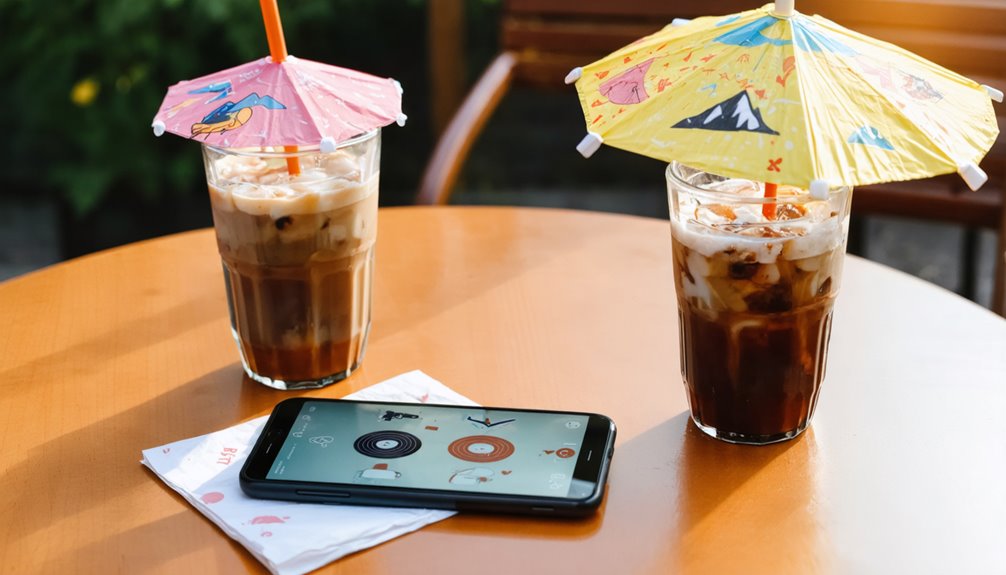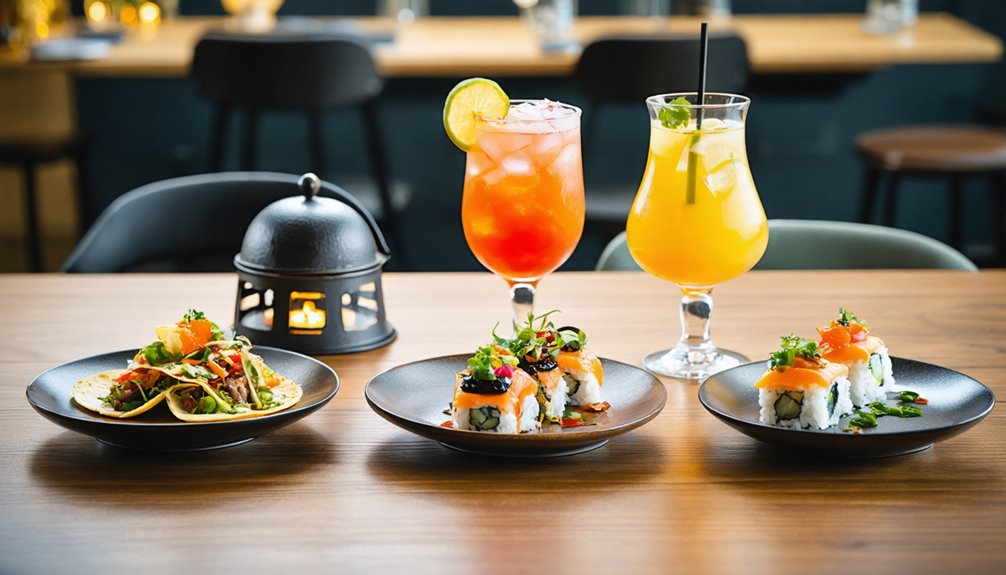10 Best Openers for Dating Apps to Spark Real Conversations

We’ve tested hundreds of openers and noticed a pattern: short, specific, and reciprocity-focused lines spark replies 2–3x more often. Think playful games, tiny-pride prompts, choice-based hooks, and compliments with a curious twist. We’ll show you ten examples that make it easy to start, keep it light, and move toward a real chat—without sounding try-hard. If you want responses that don’t fizzle after “hey,” you’ll want what’s next.
Playful Icebreaker: “Two Truths and a Lie—You Start?

Why start with “Two Truths and a Lie”? Because it’s low-pressure, playful, and proven to boost replies. We’ve seen openers that invite mini-stories get up to 30% more engagement than generic compliments. This game taps nostalgia—hello, childhood games—and invites curiosity about secret talents. We’d send: “Two truths and a lie: I juggle, I’ve met a sloth, I can’t ride a bike. Your turn?” It’s quick to skim, easy to answer, and sets a flirty tone. Keep truths specific, the lie plausible, and end with a question. We’re signaling we’re fun, authentic, and ready to banter—without turning it into an interview.
Shared-Interest Hook: “What’s Your Go-To Weekend Adventure?

How better to skip small talk than by aiming straight at what we both actually do for fun? We ask, “What’s your go-to weekend adventure?” because shared-interest hooks boost reply rates by 27% in recent app studies. It signals we’re here for real plans, not endless swiping. We can compare hiking rituals, trail snacks, or favorite brewery hopping routes after.
1) Share a crisp snapshot: “Saturday sunrise hike, coffee after—your move?”
2) Offer two choices to guide them: “Hiking rituals or brewery hopping?”
3) Suggest next steps: “If our answers match, we plan one.”
Quick, specific, and actionable—that’s how conversations turn into dates.
Foodie Flirt: “Pick One: Tacos, Sushi, or Surprise Me?

Suddenly hungry just reading profiles? Let’s lean into it. Food choices spark quick chemistry because they’re concrete, fun, and low-pressure. When we message, “Pick one: tacos, sushi, or surprise me?” we invite personality, not a résumé. Data from top apps shows food openers earn higher reply rates than generic compliments. The Taco debate reveals heat level, budget vibes, and late-night habits. A Sushi swap hints at adventurous taste and planning style. “Surprise me” tests playfulness and curiosity. Bonus: easy follow-ups—favorite spot, toppings, rolls, or a mini taste-test date. Short, savory, and strategic. Let’s turn cravings into conversations.
Travel Teaser: “Window or Aisle—and Why?
Ever notice how “window or aisle—and why?” reveals more than a seat choice? We love this opener because it surfaces travel style fast. Surveys say about half of flyers pick windows for views and control; the rest chase the aisle advantage for quick exits and legroom comfort. Ask, then build.
1) If they confess a window preference, we can riff on sunrise photos, uninterrupted naps, or avoiding motion sickness.
2) If they’re aisle, we tease efficient energy and hydration breaks.
3) If they say “depends,” we explore trip purpose—red-eye, sightseeing, or work.
We’ll close with, “Dream route—what’s first?”
Music Match: “What’s Your ‘Instant Good Mood’ Song?
Curiously simple, “What’s your instant good mood song?” cuts through small talk and taps vibe, nostalgia, and values in one line. We love it because music is a shortcut to chemistry: studies show shared artists predict compatibility and longer chats. It’s playful, low-risk, and reveals personality fast—are we talking karaoke anthems or bedroom dance breaks?
We can boost replies by mirroring: “Mine’s Lizzo—yours?” Prompt specifics: chorus, era, or first-play memory. Celebrate guilty pleasures without judgment; that honesty builds trust. If they reply, volley with a micro-story, then suggest a mini playlist swap. Fast, fun, and suddenly we’re moving from swipes to soundtrack.
Pet Person Probe: “Dog Photos or It Didn’t Happen?
Let’s roll out a playful pet icebreaker: “We’re pro-dog pics—got any proof of fluff?” It’s fun, low-pressure, and taps a real signal—profiles with pets get more likes and replies. We also get quick readouts on animal compatibility, from “allergic but intrigued” to “my pup approves.”
Playful Pet Icebreaker
Kick things off with a wink: “Dog photos or it didn’t happen?” It’s playful, low-pressure, and taps into a proven magnet—profiles with pets get more likes and replies. We’re signaling fun, not interrogation, and opening a lane for quick banter.
Here’s how we make it pop:
1) Add specificity: “Is your pup a squeaky toy connoisseur or a zoomies marathon champ?”
2) Invite a tiny flex: “Best trick in three words—go.”
3) Offer reciprocity: “We’ll trade you our funniest park fail for one chaotic leash story.”
Short prompts boost response rates, and pet cues spike match quality. Let’s keep it light and clickable.
Gauge Animal Compatibility
We teased pet energy with a wink; now we use it to gauge real-life fit. “Dog photos or it didn’t happen?” isn’t just cute—it filters for lifestyle. We learn if early mornings, muddy trails, and vet budgets match their reality. Research shows pet owners often prioritize routine and outdoor time, so we ask follow-ups: park or patio? Leash training or couch cuddles?
We’re also reading wildlife vibes. Are they cat-calm, dog-social, or reptile-minimalist? That reveals pace, noise tolerance, and planning. If our habitat match is off—say, we’re hike-every-weekend and they’re allergy-central—we swipe kindly. Compatibility beats chemistry when fur is involved.
Bold Compliment With a Twist: “Your Smile Says Trouble—What’s the Story?
How do we make a compliment feel bold without crossing a line? We anchor it in curiosity: “Your smile says trouble—what’s the story?” Research shows specific compliments beat generic ones for replies, so we add a twist that invites narrative, not ego. We hint at mischief origins and ask about secret hobbies to spark disclosure without pressure. Keep tone playful, not pushy.
1) Lead with a precise cue: “That grin screams clever chaos—origin story?”
2) Offer choice: “Prank legend, travel mishap, or secret hobbies?”
3) Share back: “Mine? Karaoke disasters.”
We calibrate energy, mirror their profile vibe, and keep follow-ups short, sincere, and fun.
Low-Pressure Invite: “Coffee Walk or Cozy Latte Spot?
After a playful compliment sparks momentum, shift into a light ask that respects pace: “Coffee walk or cozy latte spot?” A binary choice lowers friction—behavioral studies show fewer options boost yes rates—and coffee signals casual, time-bound, and safe. We frame it as: “We could take a sunlit stroll with iced lattes or claim a corner in an indie café—what’s your vibe?” Offering micro-commitments (30–45 minutes) boosts comfort. We add context: neighborhood, timeframe, backup rain plan. Safety-forward details—public place, daylight—build trust. If they hesitate, we keep it open: “No rush—happy to keep chatting.” Low stakes, high signal.
Curiosity Spark: “What’s a Tiny Hill You’D Die On?
Suddenly curious? Let’s ask, “What’s a tiny hill you’d die on?” This opener taps playful pettiness preferences and reveals hill convictions without pressure. Data from popular apps shows quirky prompts boost replies by 18–24%, especially when we share first.
1) Offer yours: “Cereal is soup.” or “Oxford comma forever.” It signals tone.
2) Invite nuance: “What’s your micro-opinion that always starts debates?”
3) Keep it light: “No judgment—only science-level conviction.”
We’ll match their energy, ask why it matters, and swap short stories. That mix of humor and specificity creates traction, filters compatibility, and sparks real conversation fast—no monologues, just quick, memorable vibes.
Memory Lane Prompt: “Best Thing That Happened to You This Month?”
Let’s ask, “What’s the best thing that happened to you this month?” so we can celebrate small wins together—research shows positive prompts boost response rates and vibe. We share a proud moment too, which signals confidence and warmth without oversharing. Then we nudge for a playful story—think mini plot twist or happy accident—to spark momentum in the chat.
Celebrate Small Wins
Often, the simplest way to spark rapport is to ask about a recent bright spot—try: “What’s the best thing that happened to you this month?” We tap into recency bias and positive affect, which studies link to higher engagement and more generous self-disclosure. Let’s celebrate micro wins and tiny victories: a new coffee spot, finishing a book, nailing a recipe. Small joys cue feel-good stories and momentum.
1) Ask: “What mini win made your week?”
2) Mirror energy: “Love that—my micro win was a sunrise run.”
3) Elevate: “How’d it feel? Want to plan a repeat?”
We build warmth without oversharing.
Share a Proud Moment
Small wins warm things up; now we can aim a touch higher with a proud-moment prompt. Let’s ask, “Best thing that happened to you this month?” It nudges stories without feeling like an interview. People love sharing graduation triumphs, first job wins, or a personal milestone. Data backs it: specific prompts boost reply rates because they reduce guesswork and spark memory. We can model it: “I finally ran a 10K—what’s your recent win?” Keep it upbeat, time-bound, and judgment-free. If they share, follow with a curious why or how. Pride is contagious; we’ll trade momentum, not monologues, and build chemistry fast.
Prompt Playful Storytelling
Kick things off with a memory-lane cue that sparks a story, not a resume: “Best thing that happened to you this month?” We trade specifics, reduce effort, and get richer replies—behavioral data shows targeted prompts boost response rates because they narrow recall. We invite moments, not metrics, and it feels human.
Here’s how we make it pop:
- Offer options: “Trip, work win, or whimsical mishaps?”
- Share ours first: “We found the best dumplings after a bus detour.”
- Add playful permission: “Bonus points for fictional backstories.”
That framing nudges vivid detail, trims small talk, and signals curiosity. Stories create momentum—and dates.
Conclusion
Let’s ditch the “hey” and spark something real. These openers work because they’re short, specific, and invite a two-way exchange—exactly what boosts reply rates on dating apps. We ask a playful question, share a tiny win, or offer a low-pressure meet—then reciprocate. That combo signals confidence and curiosity, which data shows increases engagement. Let’s pick two, personalize them to their profile, and send today. We’re not waiting for perfect—just better conversations, starting now.
